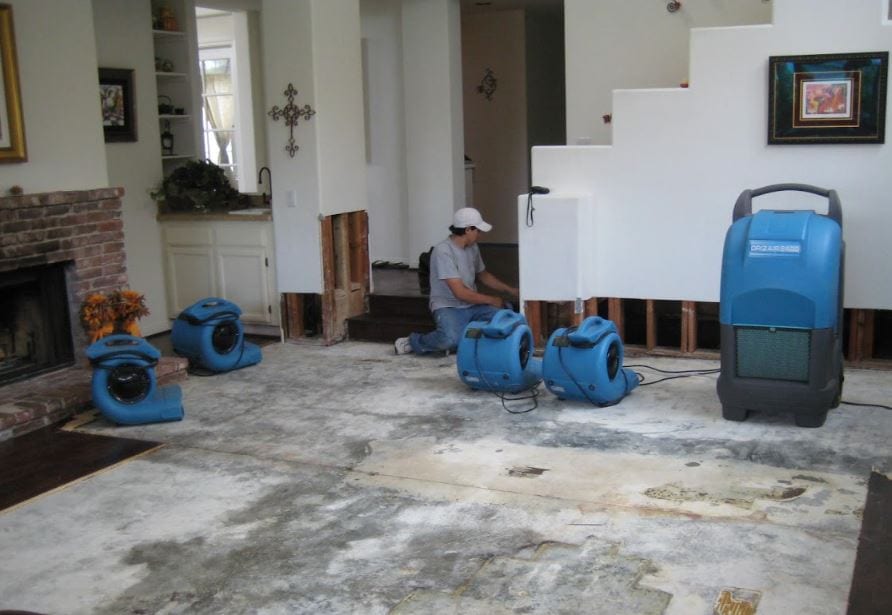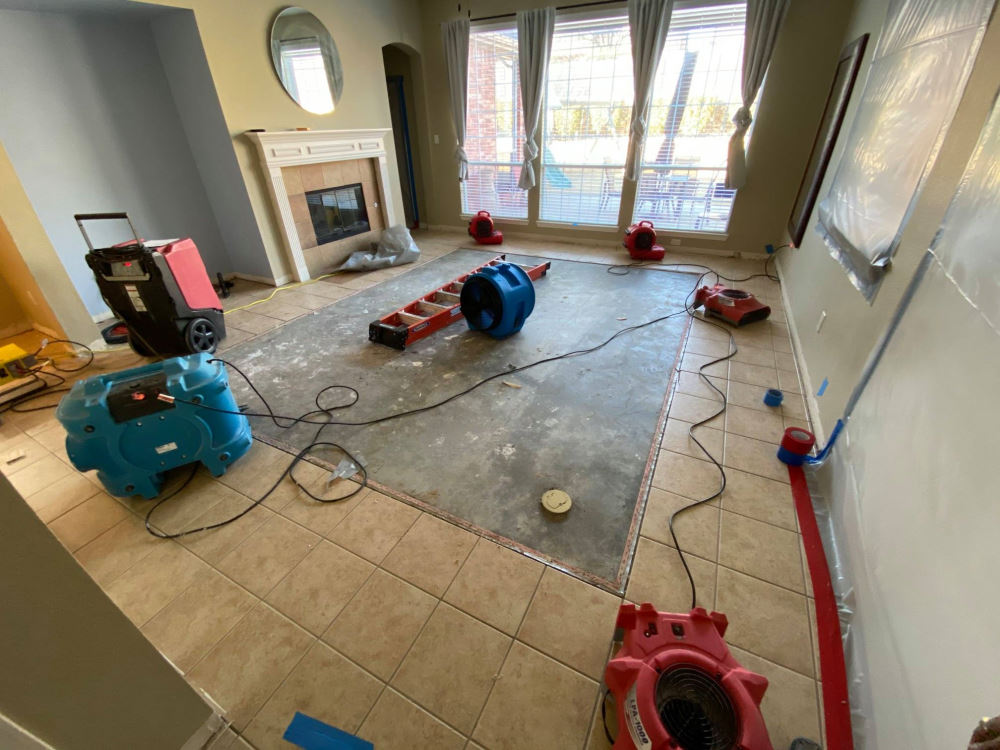The Total Overview to Water Damages Remediation and What to Anticipate
Water damages can be a significant concern for both house owners and organization owners, frequently leading to extensive fixing needs and unforeseen prices. Understanding the complexities of water damages repair is crucial for efficient healing, from assessing the source of the problem to implementing ideal repair strategies.
Comprehending Water Damages
Although water damage can emerge from various resources, recognizing its nature is crucial for reliable repair. Water damage can generally be categorized into three courses: clean water, gray water, and black water. Clean water stems from uncontaminated resources, such as dripping pipelines or rains, while gray water consists of small pollutants, commonly from appliances like dishwashers or cleaning equipments. Black water, on the various other hand, presents the highest possible risk as it includes damaging pathogens and contaminants, normally arising from sewer back-ups or floodwaters.
The degree of water damage is additional categorized into 4 categories based on the seriousness of saturation and the materials impacted. Class 1 entails minimal damages to a tiny area, while Course 4 suggests specialized drying out techniques are needed for materials like wood or plaster due to their high absorption ability. Recognizing these categories helps remediation experts examine the circumstance precisely and determine the needed mitigation strategies.
Trigger identification of the water resource and damages degree is crucial for protecting against secondary concerns such as mold and mildew development or structural damages. Appropriate assessment and categorization ensure that suitable methods and resources are utilized, facilitating an extra reliable repair process.
First Actions to Take
In the consequences of water damages, a house owner's speedy feedback is essential to mitigate additional complications - Water Damage Restoration Fairfield County. The very first step is to make sure security; shut off the power in the afflicted location to stop electric shock. If the water source is still energetic, such as a damaged pipeline, closed off the main water system quickly to stop further flooding
Following, evaluate the level of the damage. Document the circumstance with pictures and notes for insurance coverage objectives. When filing a case, this paperwork will certainly be vital. Begin eliminating any kind of standing water once security is made sure and paperwork is complete. Usage buckets, sponges, or a wet/dry vacuum to remove as much water as feasible.
After eliminating standing water, it's important to dry out the location completely. Open up doors and windows to improve air movement and consider using fans or dehumidifiers to quicken the drying out process. Get rid of any type of wet products, such as carpets or insulation, that can not be recovered. Speak to a specialist water damage remediation service to address the damages and review, making sure a detailed method to recovery. Acting quickly can dramatically minimize lasting impacts and reconstruction costs.
The Restoration Refine

Complying with the assessment, water removal is performed utilizing industrial-grade pumps and vacuums. This step is crucial for minimizing damages and stopping the development of mold and germs. When the water is removed, the drying procedure starts. High-powered air movers and dehumidifiers are purposefully put to ensure complete and fast drying of all affected surfaces, consisting of wall surfaces, floorings, and furnishings.
After drying out, the repair team concentrates on cleansing and sanitizing the areas influenced by water. This might include the use of specialized cleaning agents to eliminate pollutants. Get the facts The last phase consists of repairs and reconstruction, where harmed products such as drywall, floor covering, and insulation are replaced or fixed. Throughout the remediation process, effective communication with residential property owners is kept to guarantee transparency and address any kind of issues. This structured technique inevitably brings back the property to its original state, securing the health and wellness of its owners.
Common Difficulties Encountered
Water damage reconstruction often presents various obstacles that can make complex the recovery procedure. One considerable difficulty is the extent of the damages, which can vary commonly based on the resource of the water and the period of direct exposure. Categories of water damages, such as clean, grey, or black water, demand different techniques and safety procedures, complicating restoration efforts.
Another hurdle is the potential for mold and mildew growth. If water-damaged areas are not dried out quickly, mold can develop within 24 to 2 days, presenting health threats and calling for added remediation steps. Structural stability is likewise an issue; water can endanger wall surfaces, ceilings, and floor covering, bring about costly fixings or replacements.
In addition, the emotional toll on home owners can prevent the decision-making process. Tension and anxiety may shadow judgment, making it challenging to browse the restoration process efficiently. Ultimately, control with insurance coverage companies can be difficult, as home owners usually deal with disputes and delays pertaining to insurance coverage. Recognizing these difficulties is critical for both repair professionals and impacted individuals, guaranteeing a more reliable response to water damages occurrences.
Tips for Avoidance
Preventing water damage is a proactive approach that can considerably minimize the danger of experiencing the difficulties formerly discussed. To effectively guard your home, regular upkeep and cautious monitoring are essential.

First, inspect your plumbing system periodically for leakages or indications of deterioration. informative post Promptly attend to any kind of issues to prevent small leakages from intensifying right into considerable water damage. In addition, guarantee that downspouts and seamless gutters are free from particles to assist in correct water drainage away from your home's foundation.
2nd, mount water detection devices in crucial areas such as washrooms and Related Site cellars. These tools can inform you to leaks before they cause considerable damages. Moreover, take into consideration utilizing sump pumps in locations vulnerable to flooding.

Finally, create a comprehensive emergency plan that includes shut-off procedures for your primary supply of water. By taking these preventative actions, you not only protect your building however likewise conserve time and funds that would otherwise be invested on reconstruction efforts.

Final Thought
In verdict, reliable water damages remediation needs a methodical strategy that incorporates assessment, removal, drying, and sanitization. Recognition of the kinds and sources of water damage, along with the difficulties that might occur during the remediation process, is vital for effective outcomes. Applying safety nets can considerably lower the threat of future occurrences. By recognizing the extensive nature of water damages restoration, residential property proprietors can better navigate the recuperation procedure and protect their financial investments.
Water damages can usually be categorized right into 3 courses: tidy water, grey water, and black water. Tidy water stems from unpolluted sources, such as leaking pipelines or rains, while gray water includes small contaminants, typically from devices like dishwashing machines or washing machines. If the water source is still active, such as a damaged pipe, closed off the major water supply immediately to stop further flooding.
Speak to a specialist water damages remediation solution to deal with the damage and evaluate, guaranteeing a detailed strategy to healing - Water Damage Restoration Fairfield County. Groups of water damages, such as tidy, grey, or black water, require different strategies and security procedures, complicating repair initiatives